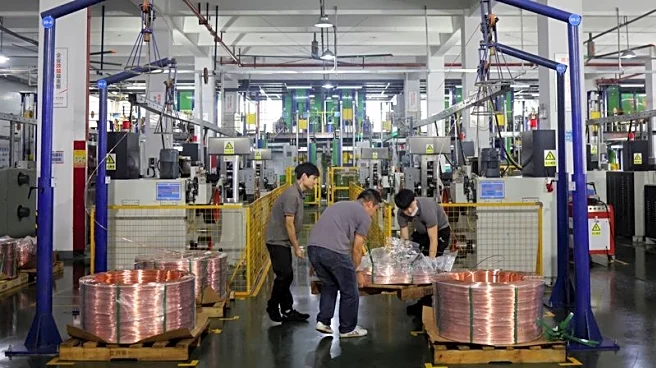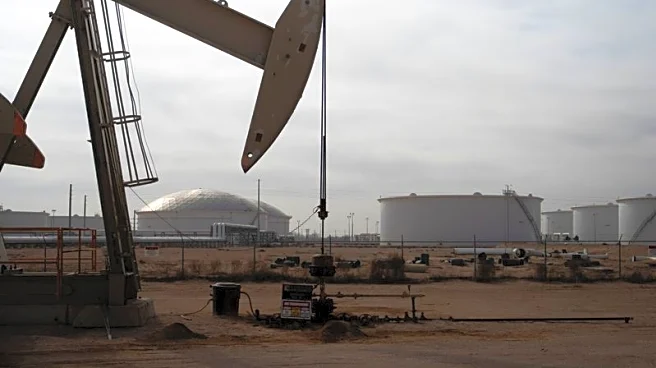What's Happening?
In August, Texas manufacturing activity continued to expand, albeit at a slower pace compared to the previous month. The production index, a key measure of factory output, decreased from 21.3 to 15.3, though it remained above the historical average. Other indicators also showed positive trends, with the new orders index turning positive for the first time since January, increasing by 9.4 points to 5.8. Capacity utilization saw a slight decline, dropping 3.6 points to 13.7, while shipments experienced a significant rise, jumping 11.5 points to 14.2. Despite these gains, perceptions of business conditions worsened slightly, with the general business conditions index falling nearly 3 points to -1.8. The company outlook index also saw a minor decline, dropping 1.4 points to 3.3. Additionally, the uncertainty index rose by more than 7 points to 18.3, surpassing the series average of 17.2.
Why It's Important?
The slower pace of growth in Texas manufacturing is significant as it reflects broader economic trends and potential challenges facing the sector. The increase in the uncertainty index suggests that businesses are facing more unpredictable conditions, which could impact future investment and hiring decisions. The rise in prices for raw materials and finished goods indicates ongoing inflationary pressures, which could affect profit margins and consumer prices. The labor market showed signs of strength, with increased headcounts and longer workweeks, but the quickening wage growth could add to cost pressures for manufacturers. These dynamics are crucial for stakeholders, including policymakers and business leaders, as they navigate the economic landscape and make strategic decisions.
What's Next?
Looking ahead, the outlook for future manufacturing activity appears optimistic, with the future production index rising significantly from 30.3 to 40.4. The future general business activity index and the future company outlook index also improved, suggesting that manufacturers expect better conditions in the coming months. However, the elevated uncertainty index indicates that businesses may remain cautious. Stakeholders will likely monitor economic indicators closely, including inflation trends and supply chain disruptions, to assess their impact on the manufacturing sector. Policymakers may also consider measures to support the industry, such as addressing supply chain challenges and managing inflationary pressures.













